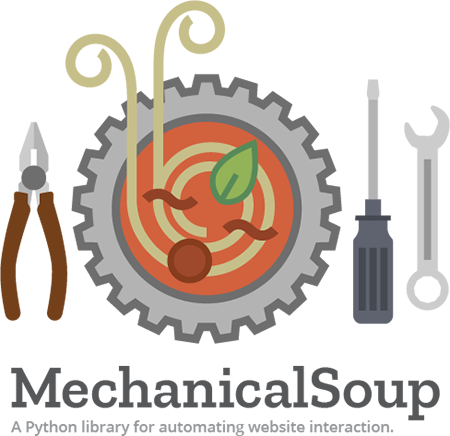Python is a popular general purpose programming language for building desktop apps, games, and mobile apps. It is also the primary choice for many data engineers and data scientists for its scripting capability and vast collection of open-source libraries, tools, and frameworks.
In summary, it is an immensely powerful programming language that excels in many domains, including web scraping. With Python, you can effortlessly automate the process of extracting data from websites. In this draft, we will delve into Python for web scraping.
Why use Python for web scraping?

Python is a popular language for web scraping due to its simplicity, flexibility, and availability of libraries. Python has several libraries that are useful for web scraping, including Beautiful Soup, Scrapy, and Requests.
Setting up your environment
Before you begin web scraping with Python, you need to set up your environment. You need to install Python and the necessary libraries. You can install Python from the official website, and then install the libraries using pip.
Basic web scraping with Python (Requests Library)
To scrape data from a website using Python, you need to send a request to the website's server and then parse the HTML content of the response. You can use the Requests library to send a request, and then use Beautiful Soup to parse the HTML content.
import requests
from bs4 import BeautifulSoup
url = '<https://example.com>'
response = requests.get(url)
soup = BeautifulSoup(response.text, 'html.parser')
The above code sends a GET request to the website at the specified URL and then parses the HTML content using Beautiful Soup.
Python Web Scrapping Libraries
In this post we offer you the best open-source Python web scrapping libraries.
1- Scrapy
Scrapy is a powerful and flexible web scraping framework written in Python. It is used to extract data from websites and process it automatically. Scrapy provides an integrated way for handling requests and responses, parsing the HTML and XML pages, and storing the extracted data in various formats such as CSV, JSON, or XML.
To start using Scrapy, you need to install it first. Scrapy can be installed using pip, a package manager for Python. Open the terminal and type the following command to install Scrapy:
pip install scrapy
Once the installation is complete, you can create a new Scrapy project using the following command:
scrapy startproject {project_name}
This will create a new directory with the name of your project and the following structure:
Advanced web scraping with Python (Scrapy)
You can perform advanced web scraping tasks with Python using Scrapy. Scrapy is a Python library that is used for web crawling and web scraping. It provides a framework for building web spiders that can extract data from websites.
import scrapy
class ExampleSpider(scrapy.Spider):
name = 'example'
start_urls = ['<https://example.com>']
def parse(self, response):
# Extract data from the response
pass
The above code defines a Scrapy spider that starts at the specified URL and then extracts data from the response using the parse method.

2- AutoScraper
If you are looking for an alternative to Scrapy, you may want to check out AutoScraper, a Python library for web scraping that allows you to easily extract structured data from websites using a simple and intuitive API. AutoScraper uses machine learning algorithms to automatically determine the best way to extract data from a website, and it can handle complex websites with dynamic content. You can install AutoScraper using pip:
pip install autoscraper
Once you have installed AutoScraper, you can create a new scraper by defining the URL of the website you want to scrape and the structure of the data you want to extract. For example, the following code creates a scraper for extracting the title and the URL of all the articles in the front page of the New York Times:
from autoscraper import AutoScraper
url = '<https://www.nytimes.com/>'
wanted_list = ['<title>', '<a href>']
scraper = AutoScraper()
result = scraper.build(url, wanted_list)
print(result)
This will output a list of dictionaries, where each dictionary contains the title and the URL of an article in the front page of the New York Times.
AutoScraper is a great choice for simple web scraping tasks that do not require the full power and flexibility of Scrapy. However, for more complex tasks, or for scraping large volumes of data, Scrapy may be a better choice due to its performance and scalability.
3- Beautiful Soup
Beautiful Soup is a Python library that is used for web scraping purposes to pull the data out of HTML and XML files. It creates a parse tree for parsing HTML and XML documents. Beautiful Soup automatically converts incoming documents to Unicode and outgoing documents to UTF-8. You can install Beautiful Soup using pip:
pip install beautifulsoup4
Once you have installed Beautiful Soup, you can start using it to extract data from web pages. For example, the following code extracts the title and the URL of all the pages in a website:
from bs4 import BeautifulSoup
import requests
url = '<http://www.example.com>'
response = requests.get(url)
soup = BeautifulSoup(response.text, 'html.parser')
for link in soup.find_all('a'):
print(link.get('href'), link.string)
This will print the title and the URL of all the pages in the website http://www.example.com.
Beautiful Soup is a great choice for simple web scraping tasks that do not require the full power and flexibility of Scrapy. However, for more complex tasks, or for scraping large volumes of data, Scrapy may be a better choice due to its performance and scalability.

4- lxml
lxml is a Python library that provides a fast and efficient way to parse XML and HTML documents. It is built on top of the libxml2 and libxslt libraries, and it provides a Pythonic API for working with XML and HTML data.
To start using lxml, you need to install it first. You can install lxml using pip:
pip install lxml
Once you have installed lxml, you can start using it to parse XML and HTML documents. For example, the following code extracts the title and the URL of all the pages in a website:
from lxml import html
import requests
url = '<http://www.example.com>'
response = requests.get(url)
tree = html.fromstring(response.content)
for link in tree.xpath('//a'):
print(link.get('href'), link.text)
This will print the title and the URL of all the pages in the website http://www.example.com.
lxml is a great choice for parsing XML and HTML documents that have complex structures or that require strict adherence to XML and HTML standards. However, for web scraping tasks that require more advanced features, such as handling forms, cookies, and sessions, or for scraping large volumes of data, Scrapy may be a better choice due to its performance and scalability.

5- GDOM
GDOM is the next generation of web-parsing, powered by GraphQL syntax and the Graphene framework.
Usage
You can either do gdom --test to start a test server for testing queries or
pip install gdom
gdom QUERY_FILEThis command will write in the standard output (or other output if specified via --output) the resulting JSON.
Your QUERY_FILE could look similar to this:
{ page(url:"http://news.ycombinator.com") { items: query(selector:"tr.athing") { rank: text(selector:"td span.rank") title: text(selector:"td.title a") sitebit: text(selector:"span.comhead a") url: attr(selector:"td.title a", name:"href") attrs: next { score: text(selector:"span.score") user: text(selector:"a:eq(0)") comments: text(selector:"a:eq(2)") } } } }6- Python Requests Library
Python Requests is a popular library for making HTTP requests in Python. It provides a simple and intuitive API for making requests, handling responses, and working with HTTP cookies and headers.
To start using Python Requests, you need to install it first. You can install Requests using pip:
pip install requests
Once you have installed Requests, you can start using it to make HTTP requests. For example, the following code makes a GET request to the URL http://www.example.com and prints the response content:
import requests
url = '<http://www.example.com>'
response = requests.get(url)
print(response.content)
This will print the content of the response, which is the HTML code of the page http://www.example.com.
Python Requests is a great choice for making simple HTTP requests and handling responses. However, for more complex tasks, such as handling forms, cookies, and sessions, or for scraping data from websites, Scrapy may be a better choice due to its performance and scalability.

7- MechanicalSoup
MechanicalSoup is a Python library that provides a simple and intuitive API for working with HTML forms on websites. It allows you to automate the process of filling out and submitting forms, and it can handle complex forms with multiple inputs and dynamic content.
To start using MechanicalSoup, you need to install it first. You can install MechanicalSoup using pip:
pip install MechanicalSoup
Once you have installed MechanicalSoup, you can start using it to automate the process of filling out and submitting forms. For example, the following code fills out and submits a login form on a website:
import mechanicalsoup
url = '<https://www.example.com/login>'
browser = mechanicalsoup.Browser()
login_page = browser.get(url)
login_form = login_page.soup.select('form')[0]
login_form.select('input[name="username"]')[0]['value'] = 'myusername'
login_form.select('input[name="password"]')[0]['value'] = 'mypassword'
response = browser.submit(login_form, login_page.url)
This will fill out the input fields with the names username and password and submit the form. The response of the request will be stored in the response variable.
MechanicalSoup is a great choice for automating the process of filling out and submitting forms on websites. However, for more complex web scraping tasks, such as handling JavaScript, cookies, and sessions, or for scraping large volumes of data, Scrapy may be a better choice due to its performance and scalability.

8- Memorious
memorious is a light-weight web scraping toolkit. It supports scrapers that collect structured or un-structured data. This includes the following use cases:
- Make crawlers modular and simple tasks re-usable
- Provide utility functions to do common tasks such as data storage, HTTP session management
- Integrate crawlers with the Aleph and FollowTheMoney ecosystem
- Get out of your way as much as possible
9- Crawley
Crawley is a pythonic Scraping / Crawling Framework intended to make easy the way you extract data from web pages into structured storage such as databases.
- High Speed WebCrawler built on Eventlet.
- Supports databases engines like PostgreSQL, MySQL, Oracle, SQLite.
- Command line tools.
- Extract data using your favorite tool. XPath or Pyquery (A Jquery-like library for python).
- Cookie Handlers.
- Very easy to use.
10- Ruia
Ruia is a free open-source 🕸️ Async Python 3.6+ web scraping micro-framework based on asyncio and aiohttp libraries.
Ruia features
- Easy: Declarative programming
- Fast: Powered by asyncio
- Extensible: Middlewares and plugins
- Powerful: JavaScript support
11- urllib3
urllib3 is a powerful, user-friendly HTTP client for Python. Much of the Python ecosystem already uses urllib3 and you should too.
urllib3 brings many critical features that are missing from the Python standard libraries:
- Thread safety.
- Connection pooling.
- Client-side TLS/SSL verification.
- File uploads with multipart encoding.
- Helpers for retrying requests and dealing with HTTP redirects.
- Support for gzip, deflate, brotli, and zstd encoding.
- Proxy support for HTTP and SOCKS.
- 100% test coverage.
Conclusion
Python is a powerful language for web scraping, and it can be used for both basic and advanced tasks. With the right tools and techniques, you can extract valuable data from websites and use it for various purposes.
In addition to these benefits, Python also allows for easy integration with other tools and technologies, making it a popular choice for data scientists and analysts. With Python, you can easily collect and analyze data from websites to gain insights and make informed decisions.
Moreover, Python is a versatile language that can be used for a wide range of applications beyond web scraping. Its popularity and large community also mean that there are plenty of resources available for learning and troubleshooting.
Overall, Python is an excellent choice for web scraping, whether you're a beginner or an experienced developer. Its simplicity, flexibility, and availability of libraries make it a powerful tool for extracting data from websites and using it for various purposes.




